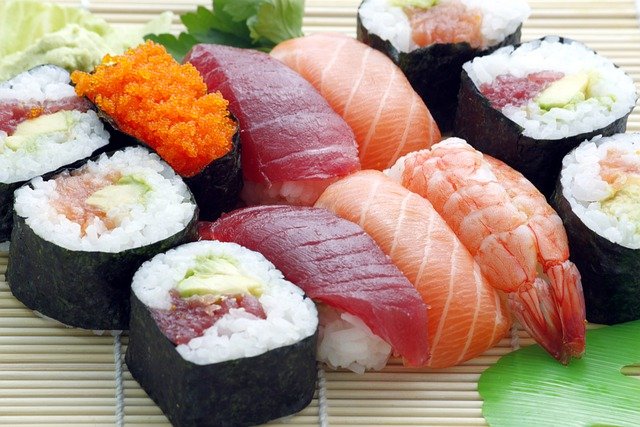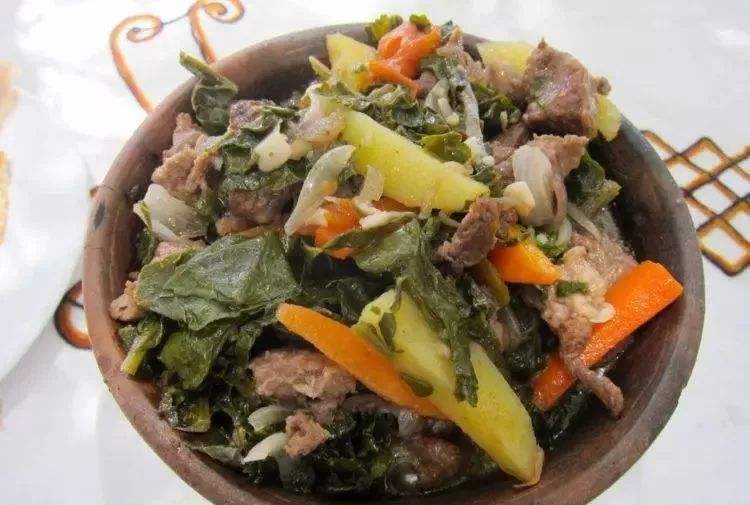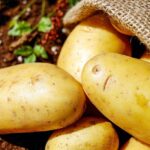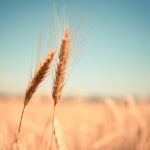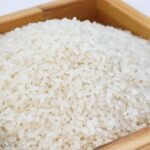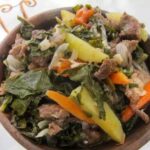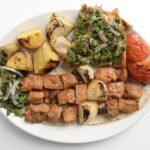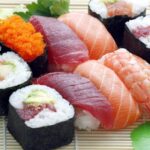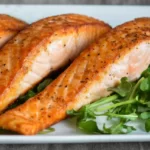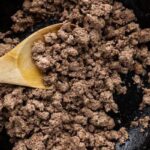Is Japanese Food Healthy? 13 Top Healthy Japanese Food
First, is healthy Japanese cuisine YES!
The typical Japanese diet is well-balanced, with small amounts of rice, plenty of vegetables, pickled and fermented foods, and more fish than red meat. It consumes less highly processed food overall and less sugar. Basically, the Japanese diet is low in calories and extremely nutritious.
Continue reading to learn more about how healthy Japanese food is.
Table of Contents
What Makes Japanese Food Healthy?
Less Red Meats
The Japanese are obviously too full to eat red meats after eating so much fish! Red meat contains saturated fats that, when consumed in excess, can clog arteries, cause obesity, and exacerbate heart disease. So start consuming more salmon, mackerel, sardines, and herring while avoiding red meat and potential heart attacks.
Soy Products
Because soy products like tofu have very little to no saturated fat, they make excellent alternatives to red meat and even dairy as sources of protein. Products made from soy help to lower blood pressure and prevent heart disease. Soy products, which are a mainstay of the Japanese diet, are an excellent addition to a healthy diet because they help lower cholesterol.
Large Quantities Of Rice
The Japanese eat rice with almost every meal of the day, including breakfast, because they consume it in such large quantities. Because rice is a low-fat carbohydrate, it fills you up and reduces your desire for fatty and artery-clogging foods. (By switching to brown rice from white rice, the Japanese could further enhance their health.)
High Vegetable Consumption
The Japanese eat a lot of vegetables, and it’s not unusual for them to eat a salad or vegetable soup for breakfast!
Because they consume a lot of cruciferous vegetables like cabbage, broccoli, Brussels sprouts, Chinese cabbage, cauliflower, kale, and watercress, the Japanese diet has an advantage over a western diet. They have significant anti-cancer properties in addition to being high in fiber and vitamin C. Vegetables can be cooked in a way that helps them retain the most nutrients, such as by lightly steaming or frying them.
Smaller Food Portions
Japanese food portions are smaller, which limits the chance of overeating. When dining out, meals for western visitors to Japan will typically be half as large as what they are used to (or even smaller if they are used to US-sized portions).
Read about:
What Does The Typical Japanese Diet Entail?
The traditional Japanese diet consists mainly of fresh, unprocessed foods with very little sugar and refined ingredients. In fact, it isn’t all that different from the typical Chinese diet, which includes rice, fish, meat, cooked and pickled vegetables, and so on. However, compared to other Asian nations, Japan’s population consumes a lot more fish because the country is actually made up of a collection of islands (all 6,852 of them). Additionally, they consume a variety of pickled, fermented, and smoked foods, as well as raw fish in sushi and sashimi.
Explore our complete selection of health benefit guides and some of our mouthwatering Japanese recipes, from miso soup to veg-packed sushi bowls. Additionally, read our in-depth article on Japanese cooking. See more about Is Ethiopian Food Healthy?
What Ingredients Make Up A Typical Japanese Diet?
Along with other beans like aduki, soy beans—typically in the form of tofu or fresh edamame—are an important component of the Japanese diet. Miso and natto, for instance, are staples made from fermented soy beans. Natto is typically eaten for breakfast and is good for the gut and helps with blood clotting.
The Japanese also eat a variety of land and sea vegetables, such as seaweed, which is rich in minerals that are good for your health and may lower your blood pressure. Particularly Fuji apples, tangerines, and persimmons, fruit is frequently eaten for breakfast or as a dessert.
In addition to their diet, the Japanese are huge fans of green tea, especially matcha tea, which is quickly gaining popularity outside of Japan, including in the UK. Green tea that has been stone-ground into a powder called matcha is prized for its high levels of catechins, which have been linked to preventing heart disease, cancer, and viruses.
How To Follow The Traditional Japanese Diet?
Typically, a soup, a main dish, and a few sides are served with a staple food in a Japanese meal.
- Staple food: steamed rice or soba, ramen, or udon noodles
- Soup: typically a miso soup made with seaweed, shellfish, or tofu and vegetables in a fermented soybean stock — though vegetable or noodle soups are other popular options
- Main dish: fish, seafood, tofu, or natto with optional small amounts of meat, poultry, or eggs
- Side dishes: vegetables (raw, steamed, boiled, sautéed, grilled, or pickled), wild plants, seaweed, and raw or pickled fruit
The umami flavor, also known as the fifth taste and different from sweet, salty, sour, and bitter, is one of the hallmarks of Japanese cuisine. In Japanese cuisine, naturally occurring umami enhances the flavor of vegetables and other nutrient-rich foods.
Another crucial element of the traditional Japanese diet is aesthetic appeal. In order to achieve a rich harmony of flavors, dishes are typically eaten in small bites with chopsticks.
The preferred beverages are hot green tea or cold barley tea, while alcoholic beverages like beer and sake are typically saved for dinner. Snacks are uncommon and infrequently consumed.
Also read: Is Angel Food Cake Healthier?
Top Healthy Japanese Food
Daikon Radish
In many Asian dishes, daikon radishes are a common ingredient. This root vegetable has a high fiber content, few B-vitamins, vitamin C, potassium, and calcium content. It is also low in calories. Daikon radish can be pickled, grated into salads, and added to soups, stews, stir-fries, and other dishes in addition to being consumed raw or cooked by the Japanese. To add them to salads and cold noodle dishes, another option is to slice or julienne them into thin rounds. This Asian product has a ton of versatility, as you’ll find.
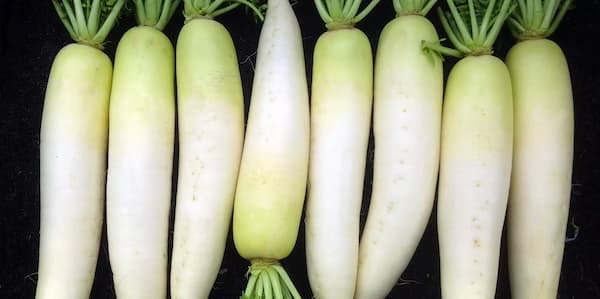
Miso
This nutritious Japanese food is made from fermented soybeans and is rich in healthy bacteria, enzymes, antioxidants, and essential vitamins and minerals. And because it includes all nine essential amino acids, it is a complete protein. Nutritionists all over the world are beginning to recognize its advantages; it helps to support healthy skin, lower cholesterol, prevent osteoporosis, boost immunity, strengthen digestion, and lower blood pressure. In Japan, miso comes in countless regional varieties that range from mild to strong and salty in flavor and color, from white to yellow to brown to red. Although miso is typically consumed in soup, there are numerous other ways to prepare it.
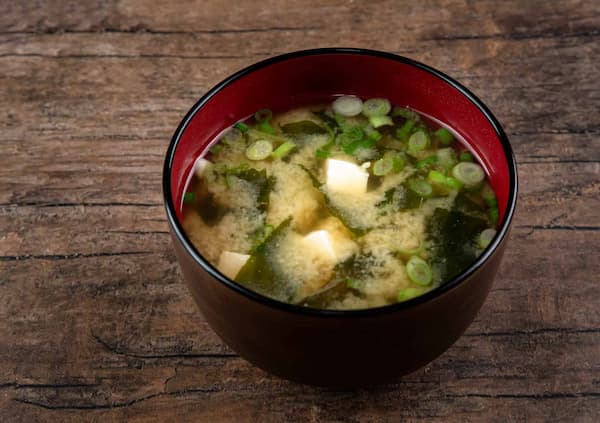
Amazake
Don’t be fooled by the name; this thick, healthy rice beverage contains no sake. Amazake, like other fermented foods, contains enzymes and bacteria that are good for your health. It also has a lot of the vitamins and minerals that rice naturally contains. Amazake, which is made from koji fermented rice, contains kojic acid, B vitamins, and a number of other nutrients that support healthy skin, hair, and nails. However, what’s more important is that it’s also high in dietary fiber and specific digestive enzymes that promote healthy digestion. Amazake can be drunk by anyone, including babies, and is delicious served warm in cold weather. Amazake was regarded as such a vital source of energy during the Edo period that its price was regulated.
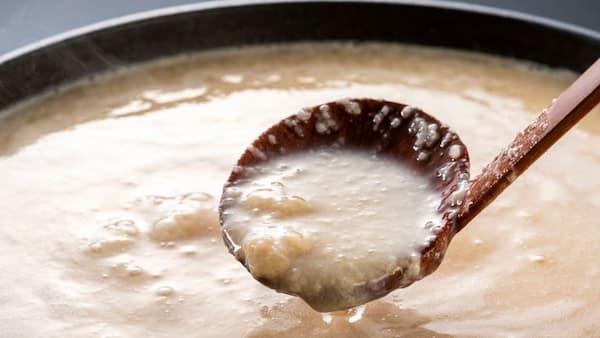
Konnyaku
Despite having an unappealing appearance, this grey, jelly-like food is pleasantly chewy and has an unusual nutritional profile. It’s a type of yam that’s used to make dishes that are simmered and hot pots. Being flavorless by itself, it absorbs flavors from other ingredients. Konnyaku is known as a “broom for the stomach” as it is 10 percent indigestible fiber, and with next to no calories, it has a reputation as a diet food. However, the mineral content of konnyaku should not be disregarded: it contains iron, calcium, phosphorus, selenium and potassium. Additionally, it has been discovered to lower blood pressure and normalize blood sugar and cholesterol levels. It makes sense why it is still regarded as a very healthy food in Japan more than 1500 years later.
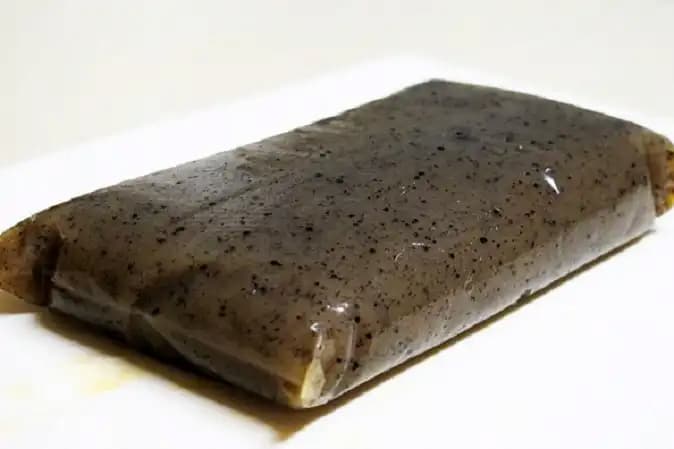
Green Tea
Green tea is renowned for helping people stay alert without feeling jittery for a reason: Theanine (or L-theanine), an amino acid found only in tea leaves, helps people feel calm but focused and moderates the effects of caffeine. Due to their high antioxidant content and numerous positive effects on cardiovascular health, tannins found in green tea are also extremely advantageous. Each type, including sencha, hojicha, and matcha, is high in calcium, potassium, manganese, and vitamins C and E. Matcha, on the other hand, is thought to contain ten times as many antioxidants as brewed leaves because the entire leaf is used. For the gums and teeth, green tea also has antibacterial qualities.
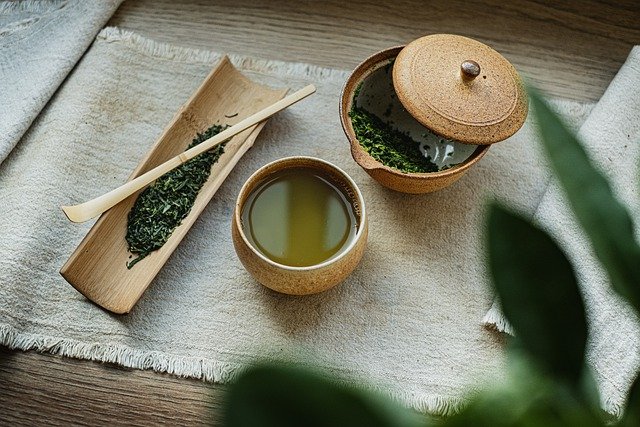
Fish
Every year, the average Japanese person eats about 140 pounds of fish. Contrarily, the typical American consumes only about 15 pounds per person each year.
High-quality protein, which aids in maintaining and growing muscle mass, is abundant in fish. Furthermore, long-chain omega-3 fatty acids, a type of fat that promotes heart and brain health, are found in fatty fish like wild-caught salmon. According to some studies, omega-3 fatty acids reduce inflammation, which is a major cause of many health issues, including cardiovascular disease. Eicosapentaenoic acid (EPA) and docosahexaenoic acid (DHA) are examples of long-chain omega 3s. Cold-water fish like salmon, mackerel, or tuna contain these fatty acids, but shellfish like clams and mussels do not.
Eating too much fish can cause some issues, though. For starters, fish is frequently high in mercury and other metals, which can be harmful to your health. Avoid farmed fish as their unnatural diets of corn or soybeans may affect their nutrient content.

Natto
Traditional Japanese food called natto is made from fermented soybeans. Natto has a texture that is similar to cheese or yogurt and a smell that some people find offensive. The Japanese, however, adore it and consume it frequently.
What makes natto such a powerful source of nutrients? In addition to being high in protein, it also contains vitamin K2, which is vital for bone health. According to studies, the cardiovascular system may also benefit from vitamin K2. It triggers the hormone osteocalcin, which directs calcium to the bones rather than the inner walls of arteries, where it might cause cardiovascular disease.
However, some people find themselves unable to tolerate even small amounts of this unusual food. Many people who eat natto claim that the smell and flavor grow on them after they’ve eaten it regularly for a while. Give natto a try if you intend to make it at home! After consuming it several times, some people grow fond of something they initially dislike. You have to get used to it!
Japanese restaurants in the US frequently serve edamame as a starter because it is a source of fiber, protein, vitamins, and minerals.
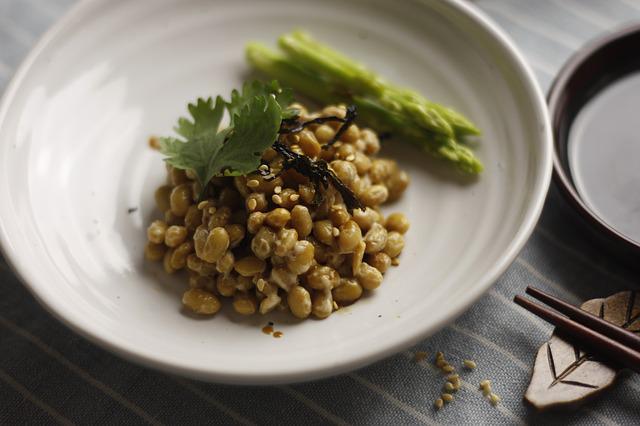
Edamame
A common Japanese snack is boiled, salted soybeans known as edamame. The soybeans are harvested when they are still green and tender, and they are then boiled or steam-cooked until they have a texture that is slightly crunchy on the outside and tender on the inside. Eating edamame is an option for a main course, a snack, or an appetizer.
Why would you want to? They contain a lot of protein, fiber, vitamins, and minerals. Edamame is a complete source of protein because it contains all twenty essential amino acids, which are the building blocks of protein. Edamame is low in calories and fat but high in protein, which is good for building muscle if you’re trying to lose weight or improve your diet. Edamame is typically found in the frozen food section of supermarkets.
Miso is one example of a fermented food that is known to be good for the microbiome.
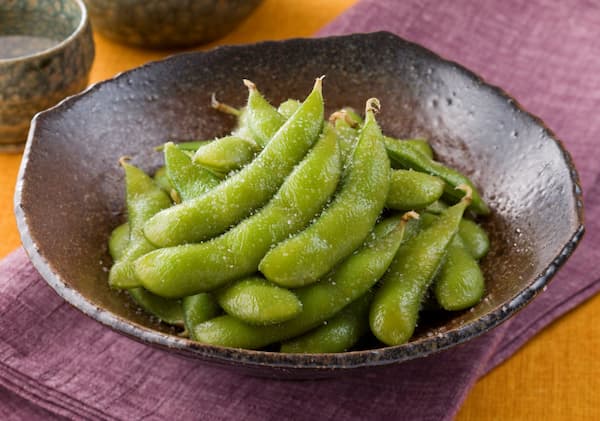
Pickled Ginger
The Japanese also like pickled ginger, a dish that is traditionally made by preserving ginger in vinegar and salt. Pickled ginger can be eaten as a side dish or snack in addition to your favorite sushi or sashimi, as you may have experienced at a sushi restaurant. You can buy pickled ginger at any Japanese market or make your own at home by preserving ginger in vinegar and salt.
Ginger has anti-inflammatory properties and might aid in a quicker recovery after exercise, which is why it’s good for you. In one study, the soreness you experience after a workout that your body isn’t used to helped with delayed onset muscle soreness (DOMS) symptoms when 2 grams of ginger were consumed. Ginger can help with nausea relief as well.
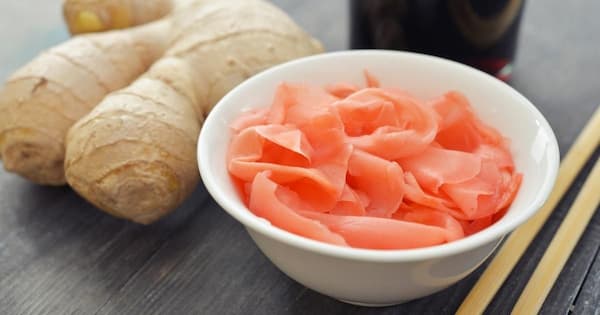
Seaweed
Additionally, the Japanese eat a lot of sea vegetables, such as seaweed. Iodine, which is needed to make thyroid hormones, is abundant in seaweed. It also includes magnesium, iron, magnesium, potassium, calcium, and vitamins A and C. They also have omega-3 fatty acids and are high in fiber.
Seaweed comes in a variety of varieties, each with their own tastes and textures. Some are soft, while others are crunch. Some have a vegetable flavor, while others have a seafood flavor. Why not experiment with different seaweeds and sea vegetables?
A seaweed salad is a delicious way to get your recommended daily intake of vitamins and greens. In Japan, where they are served with a variety of toppings, including tofu, seaweed, and smoked salmon, seaweed salads are particularly well-liked.
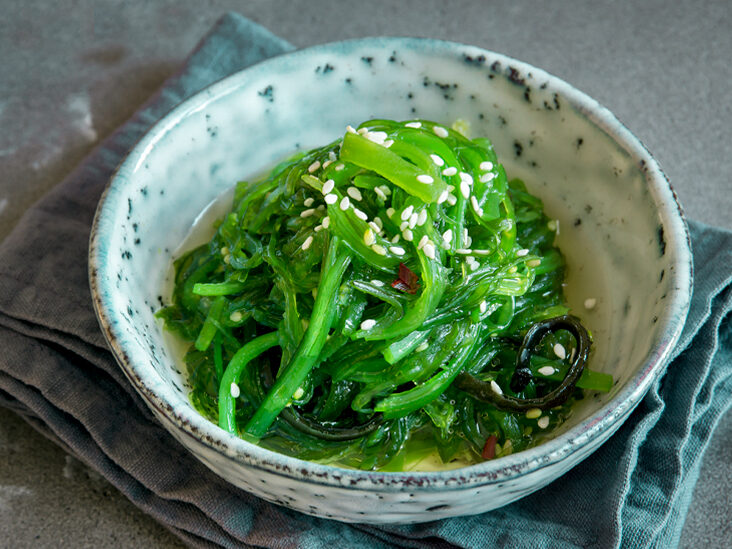
Tofu
If you’re a vegetarian or trying to cut back on your intake, tofu is a great alternative to meat because it’s high in protein and low in calories. The superfood includes each of the nine necessary amino acids. It is a valuable plant source of iron, calcium, manganese, and phosphorus that is derived from soy beans. Additionally, it contains vitamin B1, magnesium, copper, and zinc.
Tofu can be prepared in a number of different ways and comes in a wide range of shapes and textures. To large cubes lightly battered and floating in an Agedashi broth, or super-soft silken tofu that is ideal for miso soups. Tofu can be added to noodles and rice or used to soak up marinades. Slice any texture into the size of your choice using the Global G-80 fluted Santoku knife.
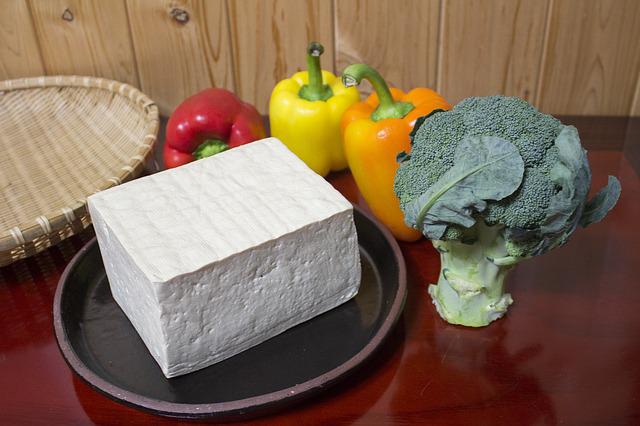
Soba
Soba, a type of buckwheat flour noodle that takes years of training to make, is less well-known than ramen and udon but is just as delicious. Comparatively speaking, soba noodles are higher in protein, fiber, complex carbohydrates, thiamine, and vitamins B1 and B2.
In addition, “rutin,” which lowers blood pressure and has anti-aging properties, is known to be present in soba.
This super noodle can be consumed in a variety of ways, both hot and cold, and is widely available in your neighborhood Asian supermarket or health food store. Using the Masahiro MV-H Masahiro Santoku Knife 18cm, which is ideal for dicing and chopping vegetables, we like to top our soba with a variety of healthy vegetables, or we’ll keep it simple by serving it cold and dipping it in Tsuyu (dipping sauce).
Soba noodles are a versatile addition to your kitchen and are never boring to eat.
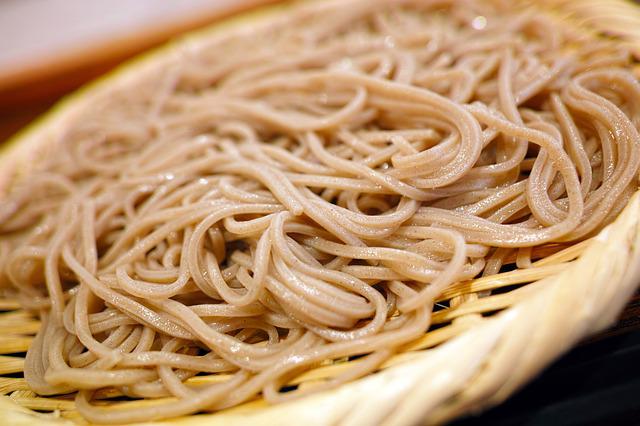
Rice
Japanese rice, whether brown or white, is essential for overall health and a diet that is well-balanced. Rice is a low-fat carbohydrate that fills you up and gives you energy so that your body can function all day.
In actuality, Japanese rice is a nutrient powerhouse, containing calcium, vitamins, dietary fiber, and vegetable protein. It is no surprise that rice is consumed almost daily in Japan because it is so versatile, tasty, and affordable. Rice that has just been cooked is the best side dish there is.

Final Words
Healthy Japanese food was the main topic of the article. Did you gain a thorough understanding of whether Japanese food is healthy after reading the entire article?
Once more, if you’re interested in learning more about healthy food, check out our posts. Please leave a comment if you have any queries about the healthiness of Japanese cuisine.
Regarding your reading, I thank you.

